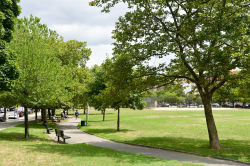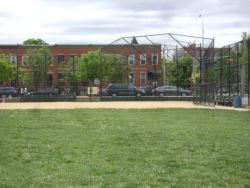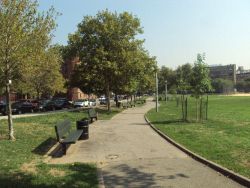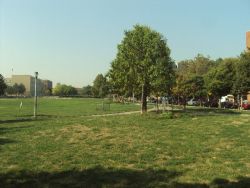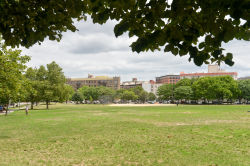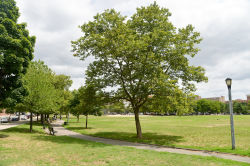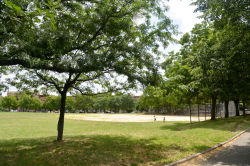Bill Rainey Park
Bill Rainey Park
What was here before?
The park and surrounding area, adjacent to the Longwood Historic District in the South Bronx, was largely rural until the late 19th century. Originally part of the Morrisania township, the area saw rapid growth after the IRT subway line connected the Bronx to Manhattan in 1904. By the early 20th century, Longwood had become one of the Bronx’s most densely built and developed neighborhoods, home to a predominantly middle-class population of European and Jewish descent.
However, starting in the 1950s, Longwood began to decline due to a combination of factors, including the construction of the Cross Bronx Expressway, suburban migration, and white flight. By the 1970s, much of the South Bronx had been devastated by arson, neglect, and crime.
Recovery efforts began in the 1980s, led by community groups and supported by city and federal programs. By the mid-1990s, hundreds of millions of dollars had been invested in new housing, infrastructure, and businesses.
How did this site become a park?
Prompted by the community, the land was acquired through condemnation in 1984. In February 1986, construction began on what would be the biggest recreational project in the South Bronx in a century. The park was commonly called Kelly Street Park because the street was closed off between Intervale and Longwood Avenues and incorporated into the park. Kelly Street is named for Samuel Kelly (1843-1925), who owned a farm nearby in the 19th century. The park was renamed Bill Rainey Park in 1991.
The park features three baseball fields, a football and soccer field, a jogging path, drinking fountains, lawns, and a diverse selection of trees. In 1995, bathrooms and the Bill Rainey Parkhouse were added to the site. The Parkhouse provides maintenance facilities for the park and serves as the headquarters for District 2 park workers, who also maintain 25 other sites in Longwood and Hunts Point. Ballfield 3 was resodded and enclosed.
What is this park named for?
William F. Rainey (1920-1985) was an African American veteran of World War II and a dedicated volunteer and leader in the community.
Rainey earned a degree in education from Columbia University Teacher’s College and helped organize cultural and educational exchange trips for students to the Caribbean. He was also responsible for turning the Police Athletic League Lynch Community Center into a model recreation facility. As director of the Lynch Center for nearly twenty years, Rainey worked tirelessly towards improving the quality of life for all who lived in the community, especially children. In addition, Rainey held many local leadership responsibilities, including one term as Vice Chairman of Community Board 2 and several years with local improvement organizations. Rainey was a member of the New York State Parks and Recreation Society and led the Recreation Committee for the Exploring Program of the Boy Scouts of America.
Bill Rainey was an avid supporter of a proposal to replace the vacant lots and tenement buildings of Kelly Street with a park at this site. Rainey died before the park was finished, but a grassroots campaign soon arose to name the park for him.
Check out your park's Vital Signs
Clean & Safe
Green & Resilient
Empowered & Engaged Users
Share your feedback or learn more about how this park is part of a
Vital Park System

